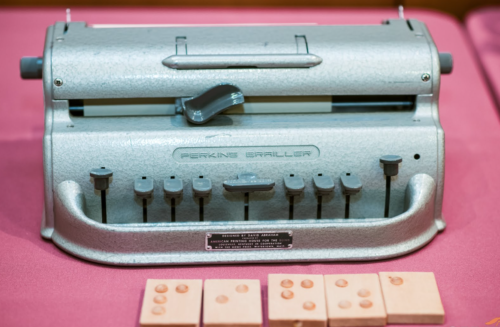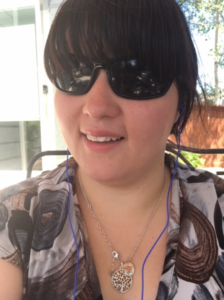
Braille in Spanish
As teaching and learning at home may be here to stay for awhile, I wanted to touch on an important topic: writing in Braille in Spanish. Many families speak Spanish as their primary language at home and many others strive…
As teaching and learning at home may be here to stay for awhile, I wanted to touch on an important topic: writing in Braille in Spanish. Many families speak Spanish as their primary language at home and many others strive to learn Spanish and expose their children to the sounds and structure of a language other than that spoken at home. To that end, if you speak Spanish at home as either a native or a learned language, there is a way to make it accessible to your young child who uses Braille.
Just as in print, writing the individual letters of the alphabet in Spanish is the same as it is for English with two important differences. First among these is that Spanish includes the Ñ (pronounced N-Yay), an accented N which comes in between the N and O. This letter, of course, is not part of English. The Ñ can be made in Braille using the dots 1, 2, 4, 5, and 6.
The second major factor to be aware of if you are writing Braille in Spanish is that Spanish (among many other languages) eliminates contractions (also called group signs) and every letter must be written out individually. For example, in the word Cinco (Spanish for Five), the I-N group sign cannot be used. It’s all un-contracted, no matter what the context in which you are writing is.
Lastly, it is important to know the way to type accented vowels and beginning question and exclamation marks in Braille for Spanish. Let’s start with the vowels.
Á = Dots 1, 2, 3, 5, 6.
É = Dots 2, 3, 4,6.
Í = Dots 3, 4.
Ó = Dots 3, 4, 6.
Ú = Dots 2, 3, 4, 5, 6.
Now for those extra punctuation marks at the beginning of exclamations and questions. No matter whether you are using Braille or print, any question in Spanish has an inverted question mark in front of it and any interjection (that is, any sentence one would ordinarily end with an exclamation point also has an inverted exclamation point at the beginning of it.
In Spanish, questions look like this: ¿____________________? and exclamations look like this: ¡_____________________!
Regular ending question and exclamation marks as well as periods, commas, colons, math signs, Etc. are the same in Spanish Braille as they are in English Braille. Likewise, the opening exclamation marks and question marks in Spanish Braille are the same as the ending ones, which are the same as they are in English. Simply use dots 2, 3, 6 for both question marks and dots 2, 3, 5 for both exclamation points.
Learning another language with your young child is a great way to stay engaged in the learning process! Please feel free to contact me with questions, comments, and stories about how your experience using Spanish Braille with your child goes.
 Emily Romero was born in Denver, CO in 1995 and attended Anchor Center from 1996—2000 and an Anchor Center contributor. She received a B.A. in Spanish along with a B.S. in psychology in 2018 and an M.A. in applied psychology and creative writing in 2020 from Regis University, and is currently working on her Ph.D. in educational psychology from the University of Northern Colorado. She acts as a Spanish instructor for five private students as well as freelance writing. Emily Romero enjoys reading (especially science and historical fiction), creative writing, playing board games, cooking, and trivia. She lives in Northglenn, CO with her parents, sister, grandmother, two crazy dogs and two sneaky cats. Find her on Linked In.
Emily Romero was born in Denver, CO in 1995 and attended Anchor Center from 1996—2000 and an Anchor Center contributor. She received a B.A. in Spanish along with a B.S. in psychology in 2018 and an M.A. in applied psychology and creative writing in 2020 from Regis University, and is currently working on her Ph.D. in educational psychology from the University of Northern Colorado. She acts as a Spanish instructor for five private students as well as freelance writing. Emily Romero enjoys reading (especially science and historical fiction), creative writing, playing board games, cooking, and trivia. She lives in Northglenn, CO with her parents, sister, grandmother, two crazy dogs and two sneaky cats. Find her on Linked In.
Read Emily’s other posts: Learning During Uncertain Times: Remote Resources for You, Highlighting the Colorado Talking Book Library and the BARD Mobile App, Listening to Stories over the Phone, and Screens Aren’t Just Visual.
Photo by From the Hip
